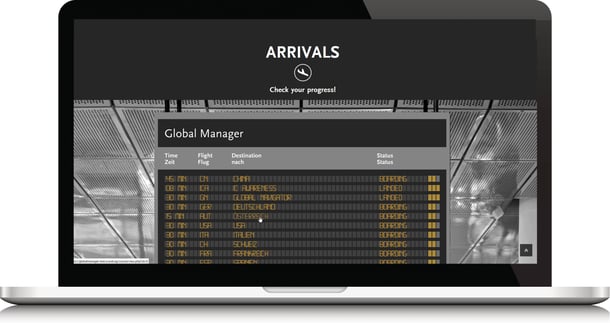Rigid processes and tools are often the reason why modern learning initiatives already fail at the concept stage. So what does it take to make flexible digital learning solutions successful? Which factors are essential to a modern learning experience?
At LearnChamp we support your organization in conveying information to employees, customers and partners. In projects we often experience Learning and Development (L&D) departments trying hard to find ways to make a real contribution to business results. They want to help to further develop a dynamic learning organization. These L&D departments aim at better integrating learning and work, reacting more quickly to business requirements and eventually playing a more active role in the organization.
It is all the more surprising to see how little has changed in the practical application of digital learning over the past years: The share of classroom training continues to be very high and investments in new technologies as well as the share of blended learning are comparably low. This means the intentions described above have not yet made their way into everyday practices in organisations on a broader scale.
New Realities 1: Video
The discrepancy between wishes and corporate realities is particularly surprising as the way information is gathered in a private environment has changed massively. No matter whether we are looking for help with changing tires, cooking or programming: The first place to go is normally YouTube. It is possible to watch detailed sequences and pause, rewind, or repeat the video if necessary. This means we can learn at our own pace. Very often we do so via smartphone– anywhere and anytime.
Statistics confirm the popularity of videos: In 2016, as much as 73% of internet data traffic resulted from using videos. In 2021, this is forecasted to rise to 82%. Video apparently is king. Additionally, the new technical possibilities around interactive video are broadening the spectrum of learner interaction and assessments.
New Realities 2: Seamless UX between platform and content
Because of the visual presentation on platforms such as Netflix and the like we are used to seamlessly integrated content where users can get a quick and easy overview. New navigation and design concepts like this influence expectations employees have towards the learning management system in their organization. More frequently they are demanding a friction-free user experience – also in a workplace context.
New Realities 3: Social Learning and Collaboration
App creators too have realized how we will learn and consume information in the future, i.e. in cooperation with others. The GoStudent app, for example, offers students continuous access to a community of tutors allowing discussions on certain questions and topics. Students can also help each other. Additionally, gamification elements were included, such as badges as a quality feature for tutors.
For many people these new digital realities are already part of their daily routines. However, once people enter their workplace they are often disappointed by what is offered when it comes to learning and information sharing – and this might also lower their motivation: Long click paths, several different and sometimes slow systems as well as outdated visual material. Companies should seek inspiration from digital information offerings and adapt their learning solutions to the new realities.
.jpg?width=788&name=Dig.learning%20experiences_ES%20(1).jpg)
Success factors of modern learning solutions
Apart from hygiene factors like good project management, at LearnChamp we identified at least three major aspects to make digital learning projects a real success:
User experience: This is about taking a broader perspective: Among other things short click paths and intuitive user interfaces are needed. To achieve this there has to be an understanding of how the target group wants the solution to work. Methods such as site maps, learner flows and mock-ups help to visualize and communicate these considerations.
Storytelling: Tell stories with your solution! This ensures learners are picked up where they stand, made curious and are provided with context. Videos and animations can help to tell these stories fluently and with a touch of emotion.
Content that is inspiring: Digital content is designed to ensure learners are not only consuming passively but also actively taking part. Carefully designed media and exercises reflect the nature of the content in the best possible way.
What does such a learning solution look like?
In practical application it is important to optimally link these success factors. Together with the ICUnet.AG LearnChamp has for instance implemented the Global Manager. It combines intercultural assessment, awareness, coaching, and a nation’s culture to a level-based and interactive integrated solution for intercultural qualification. Learners are presented with automatically personalized training content matching their own cultural background and level of expertise.

From a technological viewpoint this is an integrated digital solution interlinking Totara Learn as a carrier platform and individual country-specific learning content. In the design, learners do not experience any difference between learning platform and content. This means the user experience is seamless – similar to that of Netfllix and similar sites.
Additionally, a well-conceived navigational concept ensures that after login, learners do not fall into the abyss of the still widespread “learning rooms and learning environments”. Instead they are continuously assured they are navigating in an information environment they already know from countless daily online presences.
The familiar navigation, content that tells the respective ‘story’ of their country and an appealing design are the building blocks for a continuous and modern learning experience.
This is one example of what an intuitive learning solution can look like. However, much still remains to be done in the field of HR in the future. Let’s meet these challenges together!


